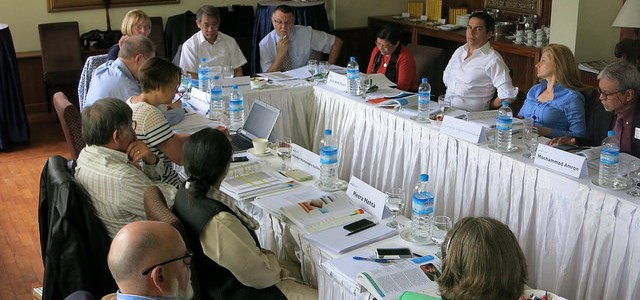Characteristics
Integration of legal frameworks refers to the need for cross-sectoral inter-connectivity and coordination so as to minimize the potential conflicts between the various legal, policy and institutional frameworks that apply to the management of water resources. IWRM expresses the idea that water resources should be managed and allocated in a holistic way, coordinating and integrating all aspects of water and land management, so as to bring sustainable and equitable benefit to those dependent on the resource.
This is why the legal regime for managing water has to follow an integrative approach as well. On a practical level, this means the legal, policy and institutional frameworks directly or indirectly affecting water resources management (e.g. forestry, energy, industrial development, municipal water supply, agriculture and environment) should be complimentary and regard must be given to the competing needs/requirements of these different sectors in any water plan, policy, legislation or permit to use water. A special attention should also be accorded to integrating customary law practices, especially in places where indigenous peoples live (A2.03). Ultimately, this process minimizes both fragmentation and friction between the various legal and policy instruments.
While the call for an integrative legal framework seems obvious, integration remains a considerable challenge in any river basin. This is often due to the fact that the management of water is relevant across multiple ministerial portfolios with little or no coordination between them (e.g. there is segregation between ministries of forestry, power, industry, agriculture and environment). Additionally, the legislative regime to manage water resources and natural resources more generally is often piecemeal and fragmented and thus an integrative assessment of the effects of the use of water across these often competing sectors is problematic.
In order to be successful, the legal integration process has to be driven by strong policy and legislation at a national level that clearly outlines the roles and responsibilities of each tier of decision-making. The legal framework also has to determine procedures for working with other sectors outside the “water box”. Furthermore, mechanisms for conflict resolution and stakeholder participation at all levels of decision-making can aid this integration process. While developing an integrated legal framework for the sustainable management of water resources is a highly complex and often costly process, it is absolutely essential for implementing IWRM.
Lessons learned
- The close links between water management and the broader socio-economic development should be reflected in water law and in the over-arching legal framework that covers water resources management.
- Integration should take the uniqueness of the environmental, economic and societal characteristics into account.
- Comprehensive legal framework should be able to integrate those who work within the water sector with those working around and outside of it.
- National water laws must take into account any international obligation under bilateral/multilateral agreements or conventions.

